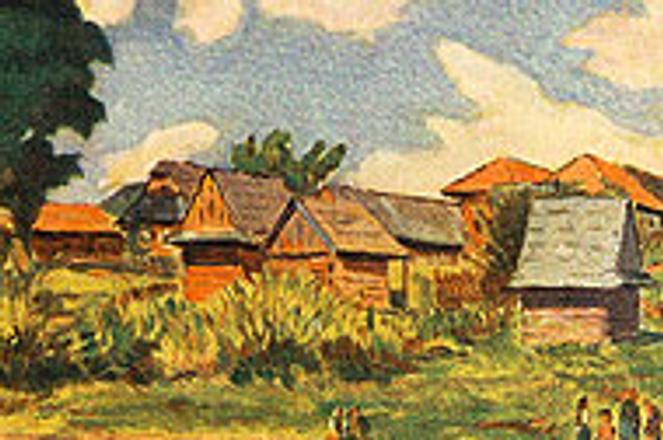Click to enlarge.
In the northern Slovak region of Orava, people used to build towns and villages on the bank of the Orava River and its tributaries. At that time , landlords were not interested in these mountainous regions. Rough weather, unfertile soil and isolation made Orava one of the poorest regions in today's Slovakia. Local peasants eked out a living, and during the prosperous seasons, they often harvested only double of what they had planted or sown. When there was a bad year, they harvested only the amount they had sown.
The village of Párnica in Low Orava was not rich either. Documents from 1547 mention one mayor, three peasants, four wretches and one shepherd.
During the Slovak National Uprising in 1944, Nazis shot 15 people here and burned down a part of the village as punishment for the village's help to partisans.
The reproduction of this painting by Jaroslav Letniansky from 1921 depicts part of the village, with typical log sheds for storing hay.
By Branislav Chovan


